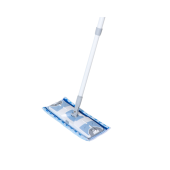Spend analysis is a must-use strategy that provides organizations with deep insights into their procurement processes, spending patterns, and supplier relationships.
After all, when you get into the habit of analyzing your spending data, you will be able to make informed decisions, optimize your procurement strategies, enhance vendor management, and identify cost-reduction opportunities.
In this article, we will explore how spend analysis impacts procurement covering the following topics:
- Strategic decision-making with cost analysis
- Maximizing value through strategic sourcing
- Leveraging supply chain analytics for efficiency
- Optimizing procurement performance with data-driven insights

Strategic decision-making with cost analysis
Cost analysis is a critical component of spend analysis that enables you to evaluate your Total Cost of Ownership (TCO) of products and services. By analyzing costs beyond the purchase price, including maintenance, support, and operational expenses, you can make informed decisions that optimize both short-term costs and long-term value.
This analysis helps identify cost reduction opportunities, support accurate budgeting, and drive strategic procurement decisions, among others.
If you want to read more on how to master and calculate your Total Cost of Ownership, read our blog posts:
Maximizing value through strategic sourcing and vendor management
Strategic sourcing is greatly influenced by spend analysis.
When you start analyzing spending patterns across different categories, you will be able to identify areas where strategic sourcing efforts can yield maximum value.
For instance, spend analysis may reveal opportunities for supplier consolidation, standardization of specifications, or exploring alternative sourcing options. Plus, when you start analyzing spend patterns across suppliers, you can better identify key vendors, assess their performance, and negotiate favourable contracts.
Also, it’s always worth keeping in mind the benefits of expanding your current pool of suppliers, namely more opportunities for you to compare and select the best volume deals on your go-to supplies.
This is where a marketplace like Droppe can tip the scale in favour of your business. On Droppe you can compare the catalogues and purchase from a pool of 100+ trusted European suppliers all in one consolidated invoice. This streamlined approach will simplify your procurement process, decreasing time spent on sourcing and negotiating prices, and potentially reducing administrative costs.

Leveraging supply chain analytics for efficiency
Spend analysis is an integral part of optimizing supply chain analytics, acting as a guide to understanding spending behaviour across the supply chain.
This tool, when applied meticulously, will help you pinpoint inefficiencies, bottlenecks, and possible risks that might be invisible to the naked eye but have a significant impact on your procurement process.
Take transportation costs, for instance. By breaking down and analyzing these costs, you can discover trends or anomalies that contribute to excessive spending. Maybe certain shipping routes are consistently causing delays, leading to increased costs and disruption in the supply chain.
Similarly, inventory management is another area where spend analysis can provide you with valuable insights. By examining the costs associated with storing and managing inventory, you can identify areas of wastage or inefficiency that can be rectified.
These detailed analyses can help increase supply chain visibility, decrease expenses, and guarantee a more reliable delivery system, making spend analysis an indispensable tool for you to make informed decisions and master strategic procurement.

Optimizing procurement performance with data-driven insights
Spend analysis aids in detailed procurement data analysis, paving the way for performance optimization within your procurement process.
When you effectively harness this rich data you will be able to keep track of pivotal metrics such as the magnitude of savings achieved, adherence to contract stipulations, and the duration of procurement cycles.
Consider, for example, the procurement cycle times. An increase in this metric might indicate potential inefficiencies that need to be addressed. By using spend analysis to identify these issues, you can implement targeted strategies to expedite your procurement process, resulting in time and cost savings.
Similarly, by tracking contract compliance, any deviations can be immediately identified, ensuring that your supplier relationships remain robust and productive. Monitoring achieved savings helps to measure the effectiveness of procurement strategies and assess return on investment.
Essentially, these data-driven insights gleaned from spend analysis empower you to enhance procurement performance consistently. They serve as the foundation for continuous improvement, guiding you to make informed and strategic procurement decisions.

Spend analysis aids in detailed procurement data analysis, paving the way for performance optimization within your procurement process.
Conclusion
Spend analysis is a cornerstone of procurement excellence, enabling organizations to achieve significant cost savings, optimize strategies, and drive operational efficiency. By harnessing the power of spend analysis, you will be able to unlock a multitude of benefits that will enhance your procurement success.
Through enhanced vendor management, organizations can leverage spend analysis insights to build strong relationships with key suppliers, negotiate better contracts, and drive cost reductions. By strategically evaluating costs beyond the purchase price through cost analysis, you can make informed decisions that consider your Total Cost of Ownership (TCO), leading to optimized short-term costs and long-term value.
Strategic sourcing is another component that is greatly influenced by spend analysis, allowing you to identify opportunities for consolidation, standardization, and alternative sourcing options.
Furthermore, spend analysis will allow you to leverage supply chain analytics, identifying inefficiencies and risks within your supply chain.
Procurement data analysis, facilitated by spend analysis, will allow you to monitor key metrics and track the effectiveness of your procurement initiatives. By harnessing data-driven insights, you can for instance identify areas for improvement, implement targeted strategies, and drive continuous improvement in procurement performance.
In conclusion, by embracing spend analysis, you will be able to unlock the power to optimize your procurement strategies, reduce costs, enhance vendor management, and drive operational efficiency.














